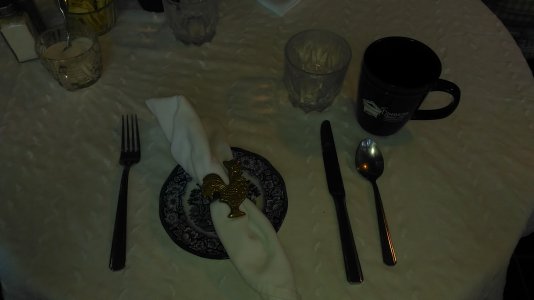Here's the promised more "controlled" comparison of the level of detail capture by the Lumia Camera, Microsoft Camera and ProShot (at level 1 sharpness). Shots were taken at ISO-100 on a tripod, all the rest at auto. Target was a "No Crossing" Sign around 30 meters away. Criterion for comparison: legibility of the "MMDA" sign on the lower right of the road sign. Zooming was done using the "Zoom" app, and the uploaded images are screenshots of the zoomed-in image (original photos are too large).
Here's the 5-MP version of the image in the view finder, to give the reader an idea on how small the target is (it's the lower right corner on the pink road sign).
View attachment 104653
Lumia Camera:
View attachment 104649
Microsoft Camera:
View attachment 104650
ProShot without live zoom:
View attachment 104651
ProShot at 10x live digital zoom:
View attachment 104652
Verdict:
Interestingly, the
Lumia Camera seemed to perform the worst in terms of detail recovery. Lumia Camera had a hint of smudging, indicative of a slight movement in the lens assembly even if the camera (or phone) was perfectly still - it's unclear though how this would have happened since the sun was shining brightly and the shutter speed for these photos are at 1/290 sec.
ProShot without live digital zoom could have produced the sharpest image, but at level 1 sharpness the noise was starting to get in the way of detail (level 0 sharpness is simply as not sharp as Lumia Camera and would put ProShot behind Lumia Camera). There were also smudge-like artifacts in the detail.
ProShot with 10x live-digital zoom performed slightly better with less noise and less of the smudge-like artifact.
The clear
winner in the comparison, as with my previous less-"controlled" comparison, is
Microsoft Camera. None of the smudge-artifact, better brightness than the Lumia Camera, less grain than ProShot and the individual letters "MMDA" could individually be recognized.
As an added
bonus, I also compared the differences in the lags of these camera apps. Focus was pre-fixed (half-press), and then the shutter was pressed at the moment the tip of the car goes behind or appeared to "touch" the stem of the plant (as shown in the photo, the cars are all behind the same plant). Factoring in my average reaction time of 190-210 milliseconds, I managed to consistently press the shutter such that the last image I see in the screen of my phone is the car's nose "touching" the stem of the plant. Hence, any lags between that point would be shown by how much the nose of the car has passed beyond the stem of the plant. All of the cars were travelling at around 50 kph.
Lumia Camera:
View attachment 104654
Microsoft Camera:
View attachment 104655
ProShot:
View attachment 104656
All of the three apps had the same lag time in their unzoomed and zoomed configuration, i.e. the lag for Microsoft camera without zoom is the same with the lag of Microsoft camera with live digital zoom, etc.
Again, the clear
winner is
Microsoft Camera with the nose of the car far from the end of the white lane marker.
The difference in lag between ProShot and Lumia Camera is very small, but by a fraction of a fraction of a second ProShot takes second place from Lumia Camera, placing Lumia Camera at the third and last position.
Conclusion:
In terms of detail recovery and shutter lag,
Microsoft Camera with maximum live digital zoom clearly wins, with ProShot in second place and Lumia Camera in third place. One must note, however, that without live digital zoom, Microsoft Camera won't be able to recovery as much detail simply by the fact that Microsoft Camera takes low resolution photos.



